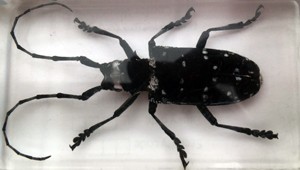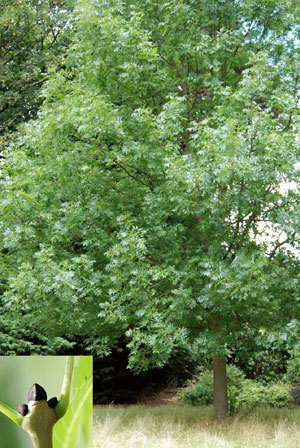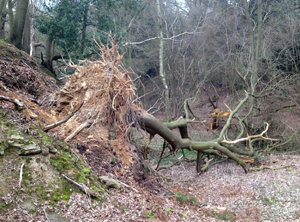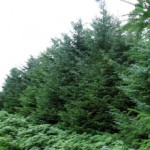What are resilient woodlands?

Making woods resilient has become the latest fashion in forestry as illustrated by the RFS conference being organised with the Woodland Trust in Birmingham at the start of October.ˇ Resilience in this context means resilient both to diseases and to climate change effects. Much of the thinking is based on the 2015 British Woodlands Resilience Survey which has been organised by the Sylva Foundation and sponsored by Oxford University, the RFS and the Woodland Trust.ˇ There have also been useful presentations on the subject such as the one given at the CONFOR Show (Confederation of Forest industries) show at Longleat, Wiltshire in early September 2015.
 But what practical steps are available to us to make woodlands more resilient to climate change and bio-threats? Mick Biddle, the Forestry Commission's Tree health officer suggests that our understanding of what leads to the spread of forest diseases and pests is very incomplete - many foresters thought that 'ramorum' would spread rapidly to affect virtually all of the UK's larch trees but actual data show that it hasn't spread significantly over the last 12 months or so. In contrast, Chalara fraxinea (ash die back) has now been found in every county in the UK, and far from being a totally new disease it has probably been in the UK since the mid 1990s. Mick Biddle is also concerned that we aren't doing enough to contain the damage done by beetles and wasps. For example, the Asian Longhorn beetle (pictured above), which gets into the UK from the Far East hidden in wood packaging material, is omnivorous and eats the wood of most broad-leafed trees. Other insect-type threats include the Great Spruce bark beetle and the Oriental Chestnut Gall wasp which has been found in Kent at the M25/M20 junction as well as at a site near St Albans in Hertfordshire.
But what practical steps are available to us to make woodlands more resilient to climate change and bio-threats? Mick Biddle, the Forestry Commission's Tree health officer suggests that our understanding of what leads to the spread of forest diseases and pests is very incomplete - many foresters thought that 'ramorum' would spread rapidly to affect virtually all of the UK's larch trees but actual data show that it hasn't spread significantly over the last 12 months or so. In contrast, Chalara fraxinea (ash die back) has now been found in every county in the UK, and far from being a totally new disease it has probably been in the UK since the mid 1990s. Mick Biddle is also concerned that we aren't doing enough to contain the damage done by beetles and wasps. For example, the Asian Longhorn beetle (pictured above), which gets into the UK from the Far East hidden in wood packaging material, is omnivorous and eats the wood of most broad-leafed trees. Other insect-type threats include the Great Spruce bark beetle and the Oriental Chestnut Gall wasp which has been found in Kent at the M25/M20 junction as well as at a site near St Albans in Hertfordshire.
Likely damage from these bio-threats can easily be exaggerated - people have regularly said that 95% of British ash trees will be killed by Chalara fraxinea but the evidence from Denmark is much more encouraging. Over there only 60% of ash in affected areas are showing symptoms of the disease so things may not develop so badly here. The threats from climate change are really quite extensive - more forest fires, windier conditions, droughts, flooding, pollution in addition to increases in diseases (vertebrates, invertebrates, pathogens). The UK may, over the next 50 years, start to experience the climate of southern France or Italy. It is suggested that we could make the UK significantly more resilient by changing current restocking/planting choices so that we plant more of the sorts of trees that are found in southern Europe.
The UK may, over the next 50 years, start to experience the climate of southern France or Italy. It is suggested that we could make the UK significantly more resilient by changing current restocking/planting choices so that we plant more of the sorts of trees that are found in southern Europe.
This creates an interesting challenge because for many years people have been saying that we should plant locally sourced trees ("local provenance") and indeed some foresters like to collect their own seeds from known, local sources.ˇ If we are to plant species from southern Europe then the whole local provenance argument will be jettisoned in the name of resilience.
 The Forestry Commission's John Wear, who is the official FC advisor on resilience says that the key to resilient woodlands is diversity in four forms -'age diversity' is recommended suggesting clear-felling of large areas is bad because all the trees used to restock the area will be the same age - so final felling needs to be staggered over several years or a continuous cover strategy adopted.
The Forestry Commission's John Wear, who is the official FC advisor on resilience says that the key to resilient woodlands is diversity in four forms -'age diversity' is recommended suggesting clear-felling of large areas is bad because all the trees used to restock the area will be the same age - so final felling needs to be staggered over several years or a continuous cover strategy adopted.
John Wear also recommends structural diversity to reduce the risk of wind damage. 'Species diversity and genetic diversity' are also key steps in making our woodlands more resilient but here there are some real tensions with other forestry objectives - for example lots of species diversity can jeopardise economies of scale.' It's an open question at the moment whether all this rhetoric about resilience will lead to much behavioural change or will just end up being a passing fad.' At the moment there are many foresters carrying on with "business as usual" in the virtually industrial plantations of Sitka spruce in Scotland and Northern England and these are surely the soft underbelly of British forestry. ˇ According to Andrew Cameron who has written a recent paper on the subject, "new planting and restocking should be established in mixtures" and he warns that the windier weather will require much earlier thinning. Being largely a monoculture of spruce, Scottish woodlands are very much at risk of any new disease which targets Sitka spruce - the current lack of diversity in Scottish forestry could make a disease of this sort a game-changer.ˇ Resilience is now talked about (though robustness is an alternative term sometimes used) but determined action will be needed to prevent a disaster.
in Scotland and Northern England and these are surely the soft underbelly of British forestry. ˇ According to Andrew Cameron who has written a recent paper on the subject, "new planting and restocking should be established in mixtures" and he warns that the windier weather will require much earlier thinning. Being largely a monoculture of spruce, Scottish woodlands are very much at risk of any new disease which targets Sitka spruce - the current lack of diversity in Scottish forestry could make a disease of this sort a game-changer.ˇ Resilience is now talked about (though robustness is an alternative term sometimes used) but determined action will be needed to prevent a disaster.
Comments are closed for this post.
Discussion
As well as improving the diversity of our existing forests we need to urgently plant more. The problem throughout the UK is that our land is owned by a small clique of extremely wealthy people who “use” it for recreational shooting of deer and grouse and/or harvesting huge subsidies for uneconomic and ecologically damaging sheep ranching. If these uplands were left ungrazed we would see new forests (not “scrub”) which would help with global warming and help protect our bird and other species from extinction. I forgot to mention intensive farming …. I could go on …..
Totally agree…as with many things in life, how is it so many of us see the light but seem helpless to affect local let alone global changes which will benefit future generations
This planet is unique, fragile and beautiful and has evolved a glorious diversity of life-forms and inter-acting eco-systems, of which we are a part, but the problems we are creating are immense, there are too many of us demanding too much of what is essentially our only home. We seem unable to grasp the fact that if we don’t change our attitudes pretty soon, pretty soon it will be too late, so to paraphrase JFK, think more in terms of ” not what my planet can do for me, but what can I do for my planet”.
The word that really jumps out of this great article is DIVERSITY. Also as with most other things in life standing still or trying to go backwards is not really an option.

[…] that is diverse in terms of its species composition, and its structure. Whilst it is good to plant native trees (of local provenance), it is also important to source some from further afield – where the climate might be warmer […]
Woodlands, climate and robustness. | Woodlands.co.uk
13 January, 2017